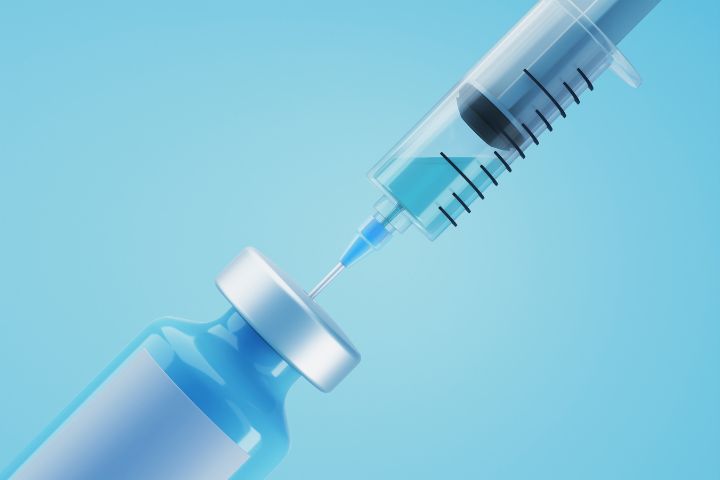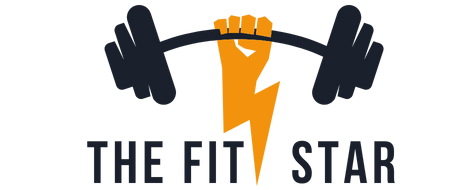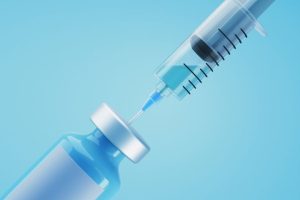The Impact of Sermorelin Dosage on Weight Loss
In “The Impact of Sermorelin Dosage on Weight Loss,” the article explores the relationship between the dosage of sermorelin, a growth hormone-releasing peptide, and its effectiveness in promoting weight loss. By examining various studies and research, it sheds light on the potential benefits and implications of different sermorelin dosages on individuals seeking to achieve their weight loss goals. With its friendly tone, the article aims to provide valuable insights and guidance for those interested in harnessing the potential of sermorelin for weight management.

Sermorelin Dosage and Weight Loss
Contents
- Sermorelin Dosage and Weight Loss
- Factors Affecting Sermorelin Dosage
- Determining the Right Sermorelin Dosage
- Recommended Sermorelin Dosage for Weight Loss
- Potential Benefits of Higher Sermorelin Dosage
- Risks and Side Effects of High Sermorelin Dosage
- Monitoring Weight Loss Progress
- Combining Sermorelin with Other Weight Loss Methods
- Importance of Lifestyle Changes
- Conclusion
What is Sermorelin?
Sermorelin is a synthetic peptide that is commonly used in the treatment of growth hormone deficiency and related conditions. It is a modified version of a hormone called growth hormone-releasing hormone (GHRH), which stimulates the body’s production of growth hormone. Sermorelin is often prescribed for individuals looking to lose weight due to its ability to enhance fat metabolism and promote lean muscle mass.
The Role of Sermorelin in Weight Loss
Sermorelin plays a crucial role in weight loss by stimulating the release of human growth hormone (HGH). HGH has numerous effects on the body, including promoting the breakdown of stored fat, increasing energy levels, and supporting the development of lean muscle mass. By increasing HGH levels through Sermorelin therapy, individuals can experience accelerated fat loss, improved body composition, and enhanced overall well-being.
How Sermorelin Dosage Affects Weight Loss
The dosage of Sermorelin plays a significant role in determining the effectiveness of weight loss outcomes. The appropriate dosage varies depending on several factors, including age, gender, body composition, health condition, and medical history. It is crucial to carefully determine the right dosage to ensure optimal results while minimizing the risk of side effects.
Factors Affecting Sermorelin Dosage

Age
Age is an essential factor to consider when determining the appropriate Sermorelin dosage for weight loss. The dosage requirements for younger individuals may differ from those for older individuals due to variations in hormone production and metabolism. Generally, older individuals may require a higher dosage to achieve similar weight loss results as younger individuals.
Gender
Gender can also influence the ideal Sermorelin dosage for weight loss. Studies have shown that males tend to have higher baseline levels of growth hormone compared to females. Therefore, females may require a slightly higher dosage of Sermorelin to achieve comparable weight loss results.
Body Composition
Individuals with different body compositions may respond differently to Sermorelin therapy. Those with a higher percentage of body fat and lower muscle mass may require a higher dosage to effectively promote weight loss and improve body composition. Conversely, individuals with a lower percentage of body fat and higher muscle mass may respond well to lower dosage levels.
Health Condition
Underlying health conditions can impact the dosage requirements for Sermorelin therapy. Certain medical conditions may require adjustments in dosage to account for potential interactions or contraindications. It is crucial to consult with a healthcare professional who can assess individual health conditions and determine the appropriate dosage to ensure safe and effective weight loss results.
Medical History
An individual’s medical history, including any previous hormonal treatments, can also affect the ideal Sermorelin dosage. It is important to disclose any previous treatments or experiences with hormone therapy to your healthcare professional. This information will help them accurately determine the most appropriate dosage and minimize the risk of adverse effects.
Determining the Right Sermorelin Dosage
Consulting with a Healthcare Professional
When considering Sermorelin therapy for weight loss, it is essential to consult with a qualified healthcare professional. A healthcare professional, such as an endocrinologist or hormone specialist, will assess various factors, including age, gender, body composition, health condition, and medical history, to determine the appropriate dosage. They will also guide individuals through the therapy process and monitor their progress.
Starting with Low Dosage
In most cases, Sermorelin therapy starts with a low dosage to assess an individual’s response and tolerance to the treatment. Starting with a low dosage minimizes the risk of adverse effects and allows healthcare professionals to carefully monitor the progress and adjust the dosage accordingly. It is crucial to follow the prescribed dosage and not attempt to self-adjust without consulting a healthcare professional.
Monitoring and Adjusting Dosage
Throughout the Sermorelin therapy process, regular monitoring is essential to evaluate weight loss progress and assess the effectiveness of the dosage. Healthcare professionals may adjust the dosage based on individual responses, including the rate of weight loss, changes in body composition, and overall well-being. Regular communication with the healthcare professional is key to optimizing the dosage for the best outcomes.
Recommended Sermorelin Dosage for Weight Loss
Initial Dosage
The initial Sermorelin dosage for weight loss typically ranges from 0.2mg to 0.3mg per day. This dosage is often administered through subcutaneous injections and is usually taken at night before bed to mimic the natural release of growth hormone during sleep. The initial dosage allows healthcare professionals to assess an individual’s response and tolerance to Sermorelin therapy.
Age Group Specific Dosage Guidelines
Sermorelin dosage guidelines may vary depending on age groups due to different hormone production rates and metabolic factors. For individuals aged 35 to 55, a dosage range of 0.2mg to 0.3mg per day is commonly recommended. Younger individuals, below the age of 35, may start with a slightly lower dosage, while older individuals, above the age of 55, may require a higher dosage to achieve optimal results.
Dosage Adjustments Based on Progress
The dosage of Sermorelin may be adjusted based on an individual’s progress in their weight loss journey. Healthcare professionals will closely monitor weight loss outcomes, body composition changes, and overall well-being to determine if dosage adjustments are necessary. Adjustments may involve increasing or decreasing the dosage to ensure continued progress and maintain optimal results.
Maximum Dosage Limits
There are maximum dosage limits to consider for Sermorelin therapy. Exceeding these limits can increase the risk of side effects without providing additional weight loss benefits. Typically, the maximum dosage range for Sermorelin therapy is around 1.0mg to 1.5mg per day, depending on individual factors. It is crucial to follow the guidance of a healthcare professional and avoid self-adjusting the dosage beyond the recommended limits.
Potential Benefits of Higher Sermorelin Dosage
Enhanced Weight Loss
A higher Sermorelin dosage can potentially result in enhanced weight loss outcomes. By elevating HGH levels in the body, a higher dosage of Sermorelin may increase fat metabolism and accelerate fat loss. However, it is important to note that individual responses may vary, and higher dosages should only be prescribed and monitored by healthcare professionals.
Increased Energy Levels
Sermorelin therapy can lead to increased energy levels, especially when the dosage is adjusted to an individual’s specific needs. Higher dosages can potentially provide individuals with a boost in energy, helping them maintain an active lifestyle and engage in regular physical activity, which is important for weight loss.
Improved Muscle Mass
A higher Sermorelin dosage may promote improved muscle mass development. This can be especially beneficial for individuals looking to enhance their body composition and achieve a more toned and athletic physique. Sermorelin therapy, when combined with appropriate exercise and nutrition, can support muscle growth and maintenance.
Boosted Metabolism
Sermorelin at higher dosages may also play a role in boosting metabolism. By increasing HGH levels, Sermorelin can potentially enhance the body’s metabolic rate, leading to increased caloric expenditure and a higher likelihood of weight loss success. However, it is important to approach higher dosages with caution and under the guidance of healthcare professionals to avoid potential side effects.
Risks and Side Effects of High Sermorelin Dosage
Acromegaly
One of the significant risks associated with high Sermorelin dosage is the potential development of acromegaly. Acromegaly is a rare but serious condition caused by excessive levels of growth hormone. Symptoms can include enlargement of hands and feet, facial changes, joint pain, and organ enlargement. Monitoring hormone levels and adjusting the dosage appropriately can minimize the risk of developing acromegaly.
Joint Pain
In some cases, higher Sermorelin dosages can lead to joint pain. This side effect is temporary and typically occurs due to the rapid development of muscle mass and increased stress on the joints. Adjusting the dosage or supportive measures, such as joint supplements or physical therapy, can help alleviate joint pain.
Swelling
Swelling, particularly in the hands, feet, or face, is another potential side effect of high Sermorelin dosage. This is typically a temporary condition that subsides as the body adjusts to the therapy. However, if swelling persists or becomes severe, it is important to consult with a healthcare professional.
Carpal Tunnel Syndrome
Carpal tunnel syndrome is a common side effect associated with higher Sermorelin dosage. It can cause numbness, tingling, and weakness in the hand and wrist area. Adjusting the dosage or using appropriate wrist supports can help alleviate the symptoms of carpal tunnel syndrome.
Water Retention
Higher dosages of Sermorelin can sometimes lead to water retention in the body. This may cause temporary weight gain or bloating. Adequate hydration and adjustments in the dosage can help manage water retention and minimize its impact on weight loss progress.
Nausea
Nausea is a potential side effect that may occur with higher Sermorelin dosages. This can be managed by taking the medication with food or adjusting the dosage timing. If nausea persists or becomes severe, it is important to consult with a healthcare professional.
Headaches
Headaches are another common side effect associated with higher Sermorelin dosages. These headaches are often mild and temporary. Adequate hydration and adjusting the dosage timing can help alleviate headaches. If headaches persist or become severe, it is recommended to seek medical advice.
Monitoring Weight Loss Progress
Body Composition Analysis
To accurately monitor weight loss progress, it is essential to assess changes in body composition. Body composition analysis techniques, such as dual-energy X-ray absorptiometry (DEXA) scans or bioelectrical impedance analysis (BIA), can provide valuable insights into fat mass, muscle mass, and overall body composition. Regular assessments can help track progress and make necessary adjustments to the Sermorelin dosage or weight loss strategies.
Weigh-Ins
Regular weigh-ins can provide a straightforward measure of weight loss progress. It is recommended to weigh oneself consistently at predetermined intervals, such as weekly or biweekly, to track changes in weight accurately. This information, along with other measurements and assessments, can help individuals and healthcare professionals evaluate the effectiveness of the Sermorelin dosage.
Tracking Changes in Measurements
In addition to body weight, tracking changes in measurements such as waist circumference, hip circumference, and body fat percentage can provide a more comprehensive view of weight loss progress. These measurements can be easily taken using measuring tapes or body fat calipers. Regular tracking of these measurements can inform healthcare professionals if adjustments in the Sermorelin dosage are necessary.
Combining Sermorelin with Other Weight Loss Methods
Exercise
Combining Sermorelin therapy with regular exercise can enhance weight loss outcomes. Exercise can further increase fat metabolism, promote muscle growth, and improve overall fitness levels. The combination of Sermorelin therapy and exercise can lead to more significant improvements in body composition and overall health.
Dietary Modifications
Dietary modifications are crucial when aiming for weight loss. Combining Sermorelin therapy with a balanced and nutritious diet can optimize weight loss outcomes. Prioritizing whole foods, lean proteins, fruits, vegetables, and healthy fats while minimizing processed foods, sugary beverages, and excessive calorie intake can support the desired weight loss goals.
Improved Sleep Patterns
Adequate sleep is important for overall well-being, hormonal balance, and weight management. Research has shown that poor sleep can lead to imbalances in hunger hormones, increased appetite, and reduced metabolic rate. Combining Sermorelin therapy with improved sleep patterns, such as getting 7-9 hours of quality sleep per night, can help optimize weight loss progress.
Stress Management
Stress can significantly impact weight loss efforts. Elevated stress levels can lead to emotional eating, impaired sleep quality, and hormonal imbalances. Combining Sermorelin therapy with stress management techniques, such as mindfulness exercises, meditation, or engaging in hobbies, can support weight loss goals and overall well-being.
Importance of Lifestyle Changes
Maintaining a Balanced Diet
While Sermorelin therapy can support weight loss, it is important to remember that sustainable weight loss requires long-term lifestyle changes. Maintaining a balanced diet beyond the duration of Sermorelin therapy is crucial for weight management. Consistently choosing nutritious, whole foods and practicing portion control can help individuals maintain their weight loss achievements.
Regular Physical Activity
Regular physical activity is essential for overall health and weight management. Engaging in regular exercise routines that combine cardiovascular activities, strength training, and flexibility exercises can maximize weight loss benefits. Even after completing Sermorelin therapy, maintaining an active lifestyle is key to sustaining weight loss results.
Adequate Sleep
Prioritizing adequate sleep is crucial for optimal health and weight management. Poor sleep can disrupt hormonal balance, increase cravings for unhealthy foods, and reduce motivation for physical activity. By prioritizing and maintaining healthy sleep habits, individuals can support their weight loss efforts and overall well-being.
Managing Stress Levels
Chronic stress can hinder weight loss progress and overall well-being. Implementing stress management techniques, such as exercise, relaxation techniques, or seeking support from friends and family, is essential for successful weight management. By effectively managing stress levels, individuals can maintain a positive mindset and overcome challenges that may arise during their weight loss journey.
Conclusion
Sermorelin therapy can be an effective tool in supporting weight loss efforts. The appropriate dosage of Sermorelin plays a crucial role in achieving optimal weight loss outcomes while minimizing the risk of side effects. Factors such as age, gender, body composition, health condition, and medical history should be considered when determining the ideal dosage. Regular monitoring and adjustments, under the guidance of a healthcare professional, are essential for personalized and successful Sermorelin therapy. By combining Sermorelin therapy with other weight loss methods and implementing lifestyle changes, individuals can enhance their weight loss progress, improve overall health, and achieve long-term success.







